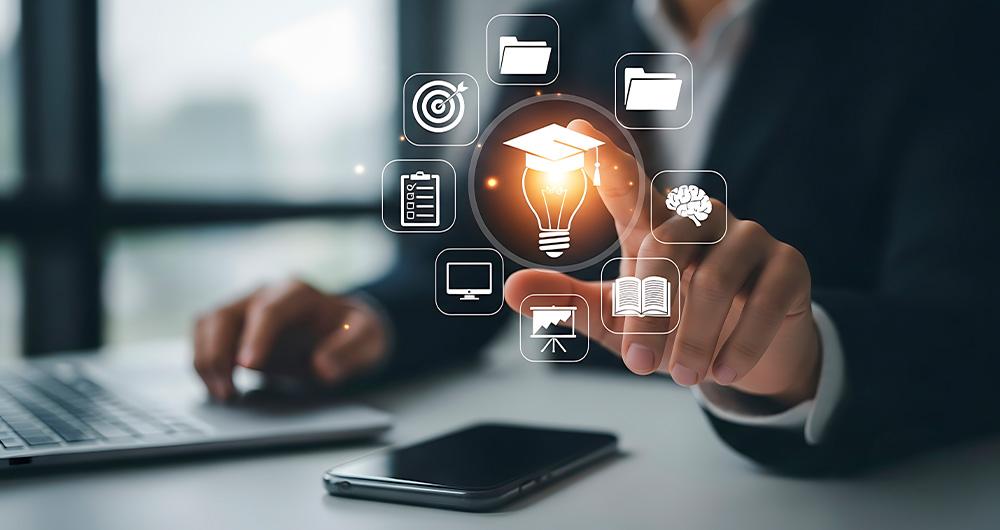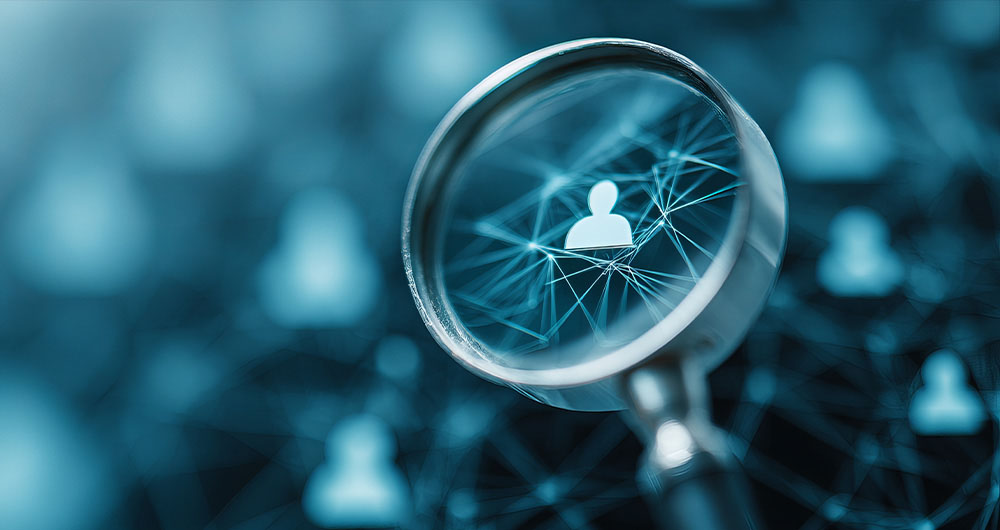
Education has the power to transform lives. Recognized as a fundamental right by the international community, it is a key pillar for human and social development. However, according to UNESCO data, 272 million children and young people still do not have access to school, 70% of countries spend less than 4% of their GDP on education, and 69 million more teachers are still needed to achieve universal primary and secondary education by 2030. In the face of this global challenge, open educational resources and open access initiatives are presented as decisive tools to strengthen education systems, reduce inequalities and move towards inclusive, equitable and quality education.
Open educational resources (OER) offer three main benefits: they harness the potential of digital technologies to solve common educational challenges; they act as catalysts for pedagogical and social innovation by transforming the relationship between teachers, students and knowledge; and they contribute to improving equitable access to high-quality educational materials.
What are Open Educational Resources (OER)
According to UNESCO, open educational resources are "learning, teaching, and research materials in any format and support that exist in the public domain or are under copyright and were released under an open license." The concept, coined at the forum held in Paris in 2002, has as its fundamental characteristic that these resources allow "their access at no cost, their reuse, reorientation, adaptation and redistribution by third parties".
OER encompasses a wide variety of formats, from full courses, textbooks, and curricula to maps, videos, podcasts, multimedia applications, assessment tools, mobile apps, databases, and even simulations.
Open educational resources are made up of three elements that work inseparably:
- Educational content: includes all kinds of material that can be used in the teaching-learning process, from formal objects to external and social resources. This is where open data would come in, which can be used to generate this type of resource.
- Technological tools: software that allows content to be developed, used, modified and distributed, including applications for content creation and platforms for learning communities.
- Open licenses: differentiating element that respects intellectual property while providing permissions for the use, adaptation and redistribution of materials.
Therefore, OER are mainly characterized by their universal accessibility, eliminating economic and geographical barriers that traditionally limit access to quality education.
Educational innovation and pedagogical transformation
Pedagogical transformation is one of the main impacts of open educational resources in the current educational landscape. OER are not simply free digital content, but catalysts for innovation that are redefining teaching-learning processes globally.
Combined with appropriate pedagogical methodologies and well-designed learning objectives, OER offer innovative new teaching options to enable both teachers and students to take a more active role in the educational process and even in the creation of content. They foster essential competencies such as critical thinking, autonomy and the ability to "learn to learn", overcoming traditional models based on memorization.
Educational innovation driven by OER is materialized through open technological tools that facilitate their creation, adaptation and distribution. Programs such as eXeLearning allow you to develop digital educational content in a simple way, while LibreOffice and Inkscape offer free alternatives for the production of materials.
The interoperability achieved through open standards, such as IMS Global or SCORM, ensures that these resources can be integrated into different platforms and therefore accessibility for all users, including people with disabilities.
Another promising innovation for the future of OER is the combination of decentralized technologies like Nostr with authoring tools like LiaScript. This approach solves the dependency on central servers, allowing an entire course to be created and distributed over an open, censorship-resistant network. The result is a single, permanent link (URI de Nostr) that encapsulates all the material, giving the creator full sovereignty over its content and ensuring its durability. In practice, this is a revolution for universal access to knowledge. Educators share their work with the assurance that the link will always be valid, while students access the material directly, without the need for platforms or intermediaries. This technological synergy is a fundamental step to materialize the promise of a truly open, resilient and global educational ecosystem, where knowledge flows without barriers.
The potential of Open Educational Resources is realized thanks to the communities and projects that develop and disseminate them. Institutional initiatives, collaborative repositories and programmes promoted by public bodies and teachers ensure that OER are accessible, reusable and sustainable.
Collaboration and open learning communities
The collaborative dimension represents one of the fundamental pillars that support the open educational resources movement. This approach transcends borders and connects education professionals globally.
The educational communities around OER have created spaces where teachers share experiences, agree on methodological aspects and resolve doubts about the practical application of these resources. Coordination between professionals usually occurs on social networks or through digital channels such as Telegram, in which both users and content creators participate. This "virtual cloister" facilitates the effective implementation of active methodologies in the classroom.
Beyond the spaces that have arisen at the initiative of the teachers themselves, different organizations and institutions have promoted collaborative projects and platforms that facilitate the creation, access and exchange of Open Educational Resources, thus expanding their reach and impact on the educational community.
OER projects and repositories in Spain
In the case of Spain, Open Educational Resources have a consolidated ecosystem of initiatives that reflect the collaboration between public administrations, educational centres, teaching communities and cultural entities. Platforms such as Procomún, content creation projects such as EDIA (Educational, Digital, Innovative and Open) or CREA (Creation of Open Educational Resources), and digital repositories such as Hispana show the diversity of approaches adopted to make educational and cultural resources available to citizens in open access. Here's a little more about them:
- The EDIA (Educational, Digital, Innovative and Open) Project, developed by the National Center for Curriculum Development in Non-Proprietary Systems (CEDEC), focuses on the creation of open educational resources designed to be integrated into environments that promote digital competences and that are adapted to active methodologies. The resources are created with eXeLearning, which facilitates editing, and include templates, guides, rubrics and all the necessary documents to bring the didactic proposal to the classroom.
- The Procomún network was born as a result of the Digital Culture in School Plan launched in 2012 by the Ministry of Education, Culture and Sport. This repository currently has more than 74,000 resources and 300 learning itineraries, along with a multimedia bank of 100,000 digital assets under the Creative Commons license and which, therefore, can be reused to create new materials. It also has a mobile application. Procomún also uses eXeLearning and the LOM-ES standard, which ensures a homogeneous description of the resources and facilitates their search and classification. In addition, it is a semantic web, which means that it can connect with existing communities through the Linked Open Data Cloud.
The autonomous communities have also promoted the creation of open educational resources. An example is CREA, a programme of the Junta de Extremadura aimed at the collaborative production of open educational resources. Its platform allows teachers to create, adapt and share structured teaching materials, integrating curricular content with active methodologies. The resources are generated in interoperable formats and are accompanied by metadata that facilitates their search, reuse and integration into different platforms.
There are similar initiatives, such as the REA-DUA project in Andalusia, which brings together more than 250 educational resources for primary, secondary and baccalaureate, with attention to diversity. For its part, Galicia launched the 2022-23 academic year cREAgal whose portal currently has more than 100 primary and secondary education resources. This project has an impact on inclusion and promotes the personal autonomy of students. In addition, some ministries of education make open educational resources available, as is the case of the Canary Islands.
Hispana, the portal for access to Spanish cultural heritage
In addition to these initiatives aimed at the creation of educational resources, others have emerged that promote the collection of content that was not created for an educational purpose but that can be used in the classroom. This is the case of Hispana, a portal for aggregating digital collections from Spanish libraries, archives and museums.
To provide access to Spanish cultural and scientific heritage, Hispana collects and makes accessible the metadata of digital objects, allowing these objects to be viewed through links to the pages of the owner institutions. In addition to acting as a collector, Hispana also adds the content of institutions that wish to do so to Europeana, the European digital library, which allows increasing the visibility and reuse of resources.
Hispana is an OAI-PMH repository, which means that it uses the Open Archives Initiative – Protocol for Metadata Harvesting, an international standard for the collection and exchange of metadata between digital repositories. Thus, Hispana collects the metadata of the Spanish archives, museums and libraries that exhibit their collections with this protocol and sends them to Europeana.
International initiatives and global cooperation
At the global level, it is important to highlight the role of UNESCO through the Dynamic Coalition on OER, which seeks to coordinate efforts to increase the availability, quality and sustainability of these assets.
In Europe, ENCORE+ (European Network for Catalysing Open Resources in Education) seeks to strengthen the European OER ecosystem. Among its objectives is to create a network that connects universities, companies and public bodies to promote the adoption, reuse and quality of OER in Europe. ENCORE+ also promotes interoperability between platforms, metadata standardization and cooperation to ensure the quality of resources.
In Europe, other interesting initiatives have been developed, such as EPALE (Electronic Platform for Adult Learning in Europe), an initiative of the European Commission aimed at specialists in adult education. The platform contains studies, reports and training materials, many of them under open licenses, which contributes to the dissemination and use of OER.
In addition, there are numerous projects that generate and make available open educational resources around the world. In the United States, OER Commons functions as a global repository of educational materials of different levels and subjects. This project uses Open Author, an online editor that makes it easy for teachers without advanced technical knowledge to create and customize digital educational resources directly on the platform.
Another outstanding project is Plan Ceibal, a public program in Uruguay that represents a model of technological inclusion for equal opportunities. In addition to providing access to technology, it generates and distributes OER in interoperable formats, compatible with standards such as SCORM and structured metadata that facilitate its search, integration into learning platforms and reuse by teachers.
Along with initiatives such as these, there are others that, although they do not directly produce open educational resources, do encourage their creation and use through collaboration between teachers and students from different countries. This is the case for projects such as eTwinning and Global Classroom.
The strength of OER lies in their contribution to the democratization of knowledge, their collaborative nature, and their ability to promote innovative methodologies. By breaking down geographical, economic, and social barriers, open educational resources bring the right to education one step closer to becoming a universal reality.


